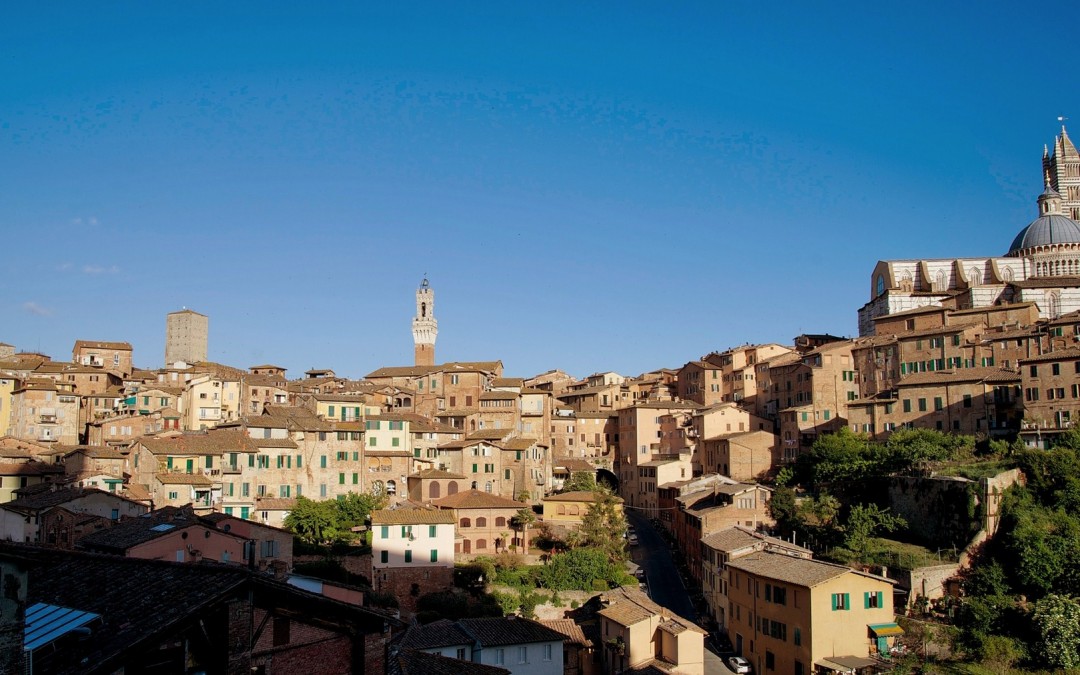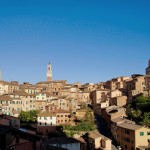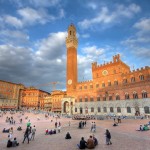Surrounded by hills and the Crete, Siena is one of the most beautiful medieval cities in the world.
Among the many possible itineraries through Siena we suggest you start your tour of the city from its heart: the famous Piazza del Campo, with its shape like a shell, which annually hosts the famous Palio.
The Palio di Siena takes place each year on July 2 and August 16, on this occasion the city is divided into districts, this event is a centuries-old tradition that still lives thanks to the passion and commitment of every citizen of Siena.
Piazza del Campo is overlooked by many important buildings, first of all the Palazzo Comunale, with its red bricks and white marble, which inlcudes the Museo Civico. Inside this museum are preserved many masterpieces of Siena’s artists, including the magnificent “Maestà” by Simone Martini and the famous “Buono e Cattivo Governo” by Ambrogio Lorenzetti.
Next to the Town Hall, the Torre del Mangia stands proudly, it is one of the tallest towers in Italy, and it is possible to climb it: the effort to climb every step will be richly rewarded by the view of Siena and the countryside that can be enjoyed from the top.
On the opposite end of the square is the monumental Fonte Gaia by Jacopo della Quercia, where every visitor has to make a wish and throw a coin.
A visit to this amazing city must certainly also include the magnificent Piazza del Duomo, and the Cathedral of Santa Maria Assunta and the large adjacent Baptistery.
Among the museums to visit in Siena, we recommend the Museo dell’Opera del Duomo that includes the “Maestà” by Duccio di Buoninsegna, a unique masterpiece in the history of Art, and the National art Gallery which houses works by Simone Martini, Duccio di Buoninsegna and other important artists.
Walking the streets of the city center is always a suggestive experience, in every season and in every moment of the day. While exploring the city, you have to pay attention to which district you are visiting: you can recognize the district by the coat of arms hanging at the windows and doors of houses and shops, and discover the church of the district and its fountain. If you want to understand the essence of the city, you can also visit one of the many museums of the Palio, here you will find some “contradaiolo” who will gladly explain every ritual, legend and curiosity concerning the Palio and the city.




